Aug 5, 2017
Partricipants group 8
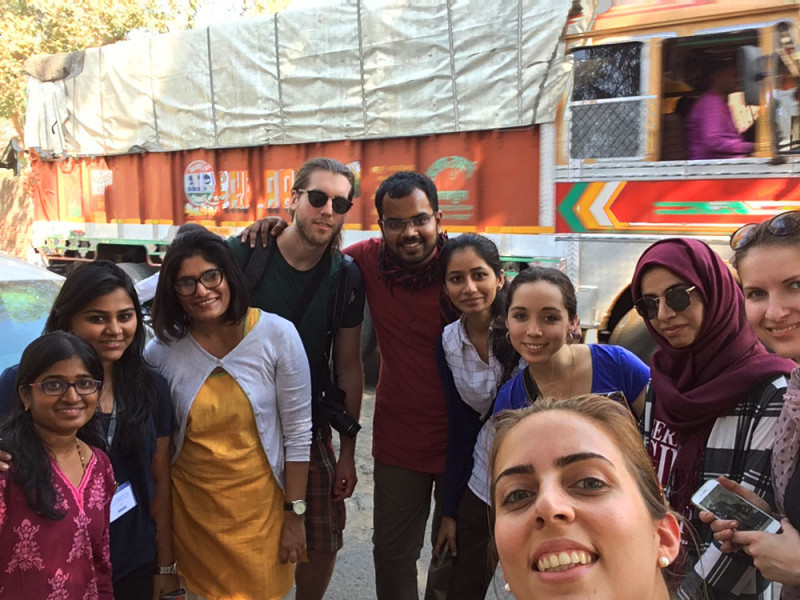
Feb 7, 2017
Sivagami, Keerti, Sonat, Milos, Krishna, Girisha, Martha, Laura, Hamida and Andrea
Feb 7, 2017
The starting point of the workshop is the concept of tactics. The top overloads objects with meaning, function and/or emotion. For example, a lighter is for lighting cigarettes. Tactics is the concept of reclaiming the object from bottom-up. A lighter then becomes an object with which you can open bottles.
The research object is abandoned mills. Most inner-city mills in Ahmedabad, a city where allegedly 75% of all denim in the world originates, were abandoned in de 198os. Many of them were torn down to make way for shopping malls or apartment blocks.
The mills are not of any particular architectural beauty, but within their walls they hold stories about the people and the city of Ahmedabad that shouldn’t be forgotten. Which stories does a mill hold? If you preserve the building, what stories do you hide and what stories do you reveal? And how do you do that? What functions should you give the old mill, knowing that tourism capitalizes on everything?
The method applied in this workshop is bricolage. Found material is used to create something new. The material can be physical, for example the structure of the place or the vegetation. But bricolage can also be immaterial, by trying to think like the people that make use of the mill at this moment, or live nearby.
Picker’s Mill functions as a test case for the tactics of bricolage. At the moment, the building is used for illegal activities.
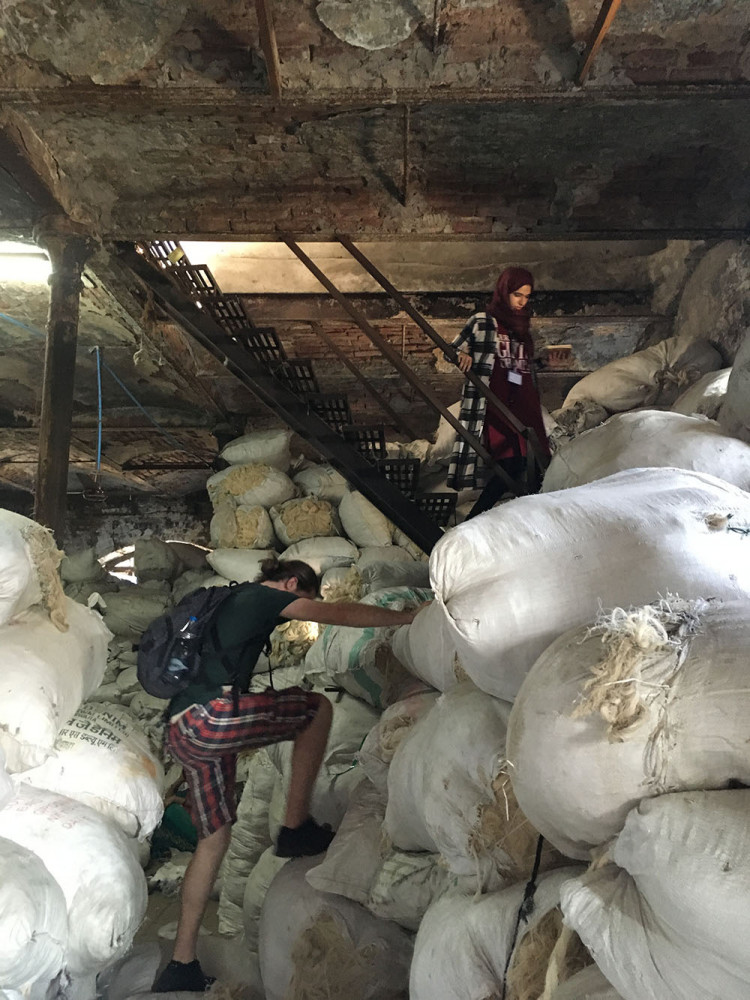
Feb 7, 2017
work in progress - Milos and Hamida at the Printing Mill
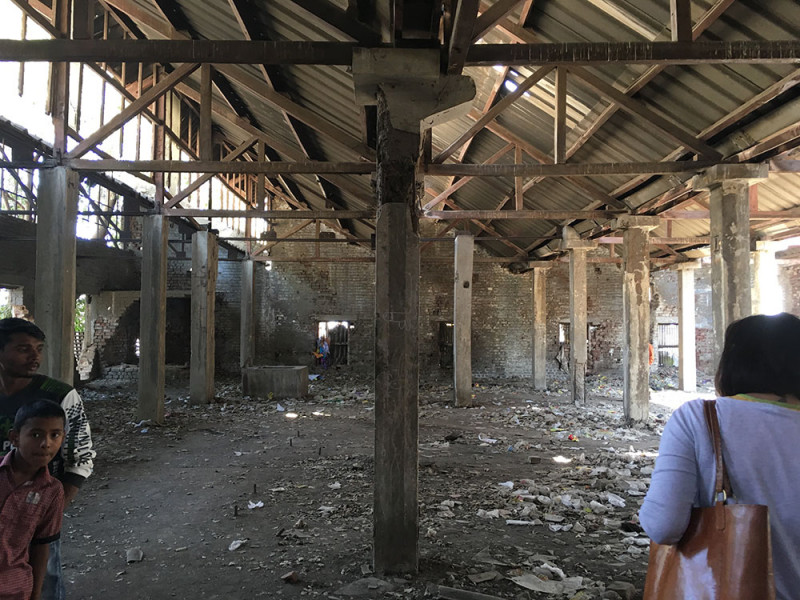
Feb 7, 2017
Picker's Mill
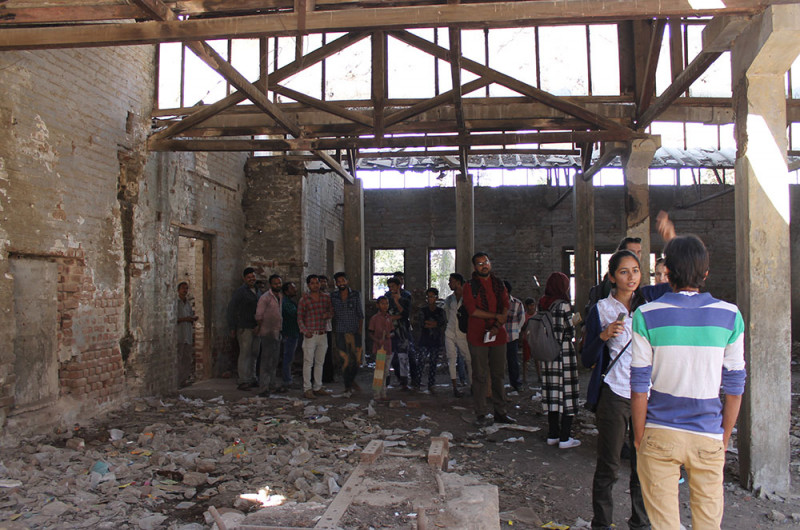
Feb 7, 2017
Picker's Mill
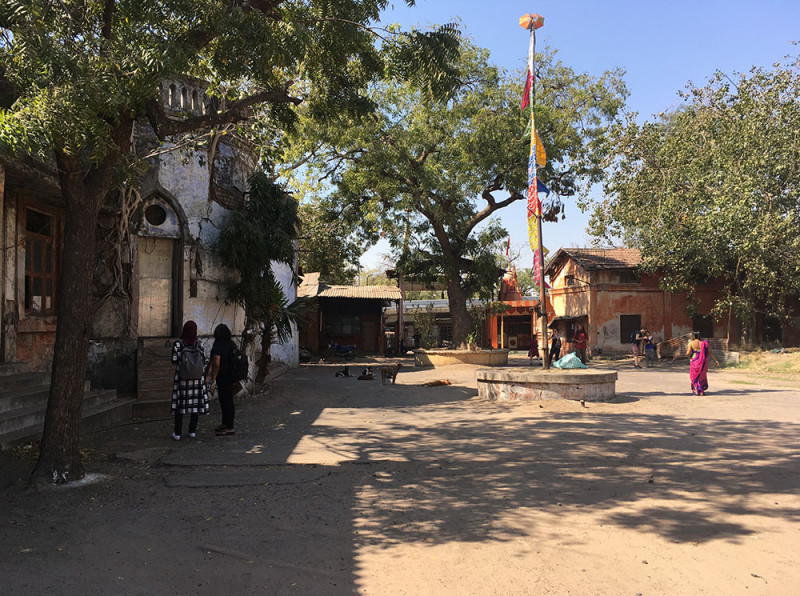
Feb 7, 2017
old Rajnagar Mill
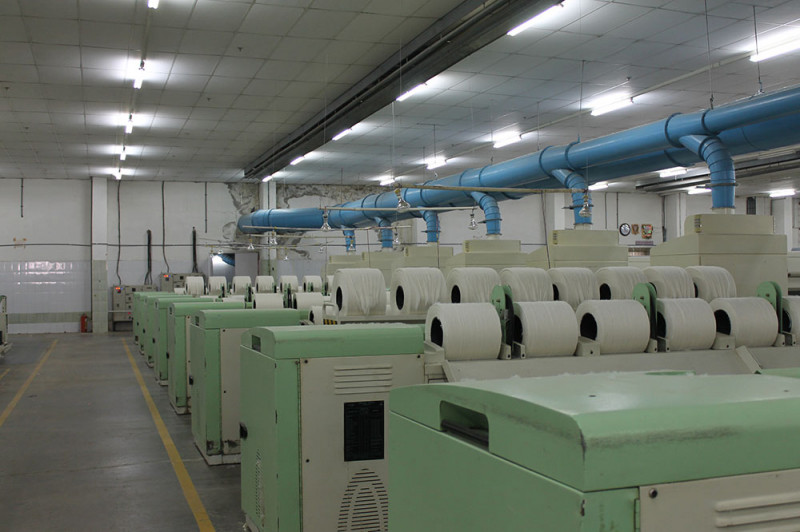
Feb 7, 2017
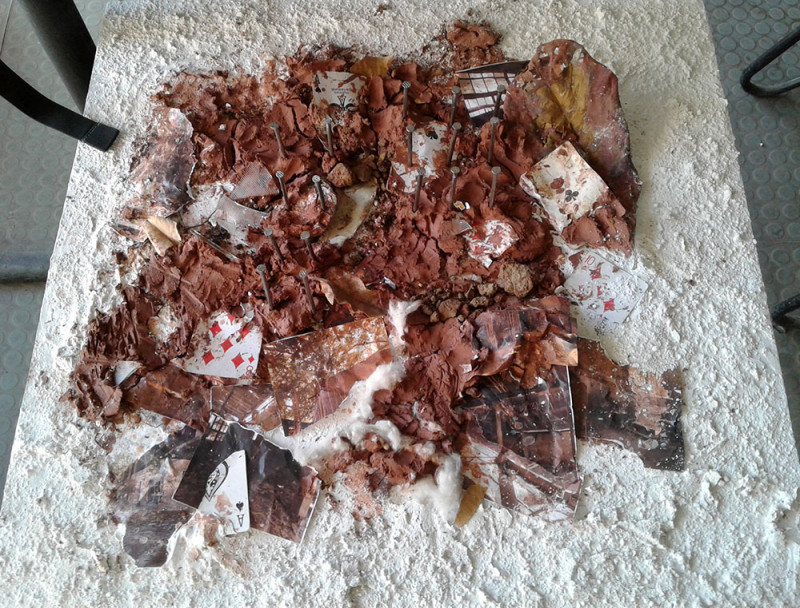
Feb 7, 2017
mid term presentation
After visiting three different sites with abandoned mills, and a modern new mill, the participants made models representing an abstract narrative about abandoned mills with materials they found in the mills.

Feb 7, 2017
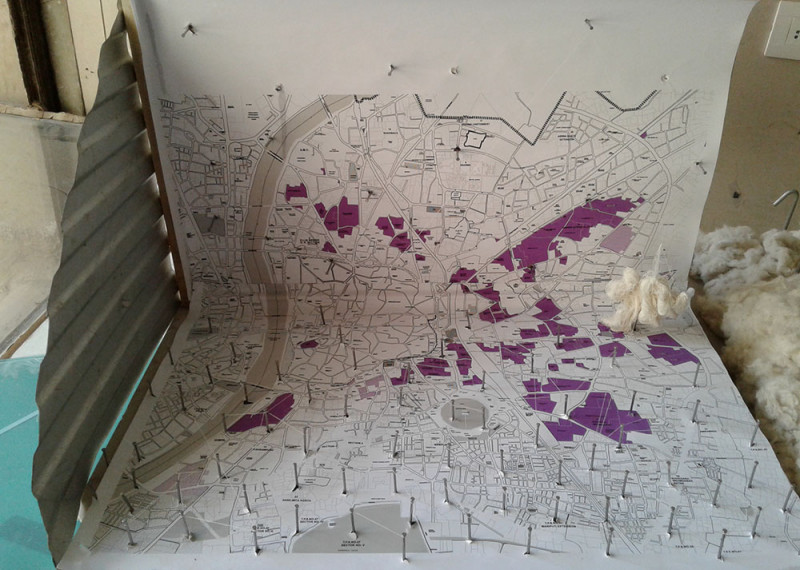
Feb 7, 2017
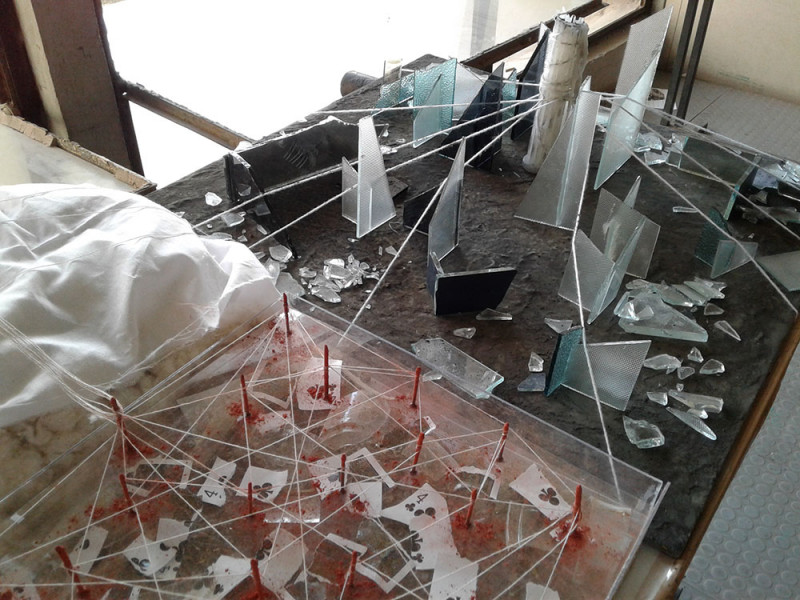
Feb 7, 2017
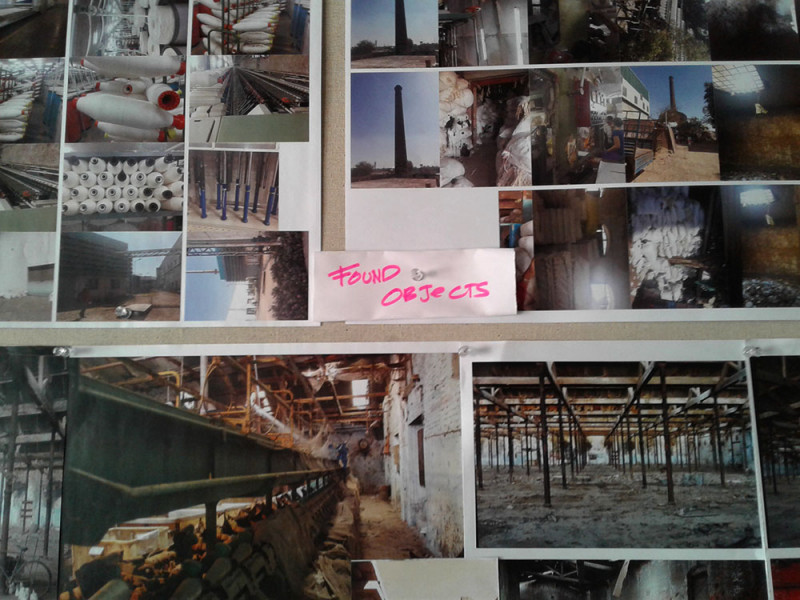
Feb 7, 2017
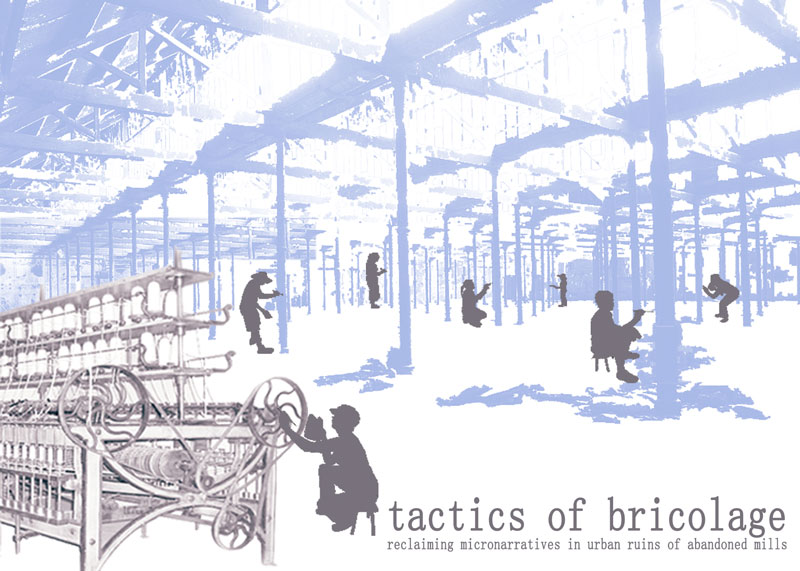
Nov 22, 2016
Tactics of Bricolage
reclaiming micronarratives in urban ruins of abandoned mills
Abandoned mills form a large part of the urban spaces, especially in Ahmedabad. They are what Harrison says a “material excess of ruin,” and hence Industrial Heritage. In that definition, Industrial Heritage has the potential of making us reflect upon the fluid and porous distinction between value and waste. It offers an opportunity to assemble new spatial meanings from found objects of abandoned mills by bricolage—piece-by-piece building a micronarrative of contemporary voices. In that understanding, the design becomes the domain of the user-individual—the bricoleur—who creates a complete story by means of environment and materials at hand. In revisiting this redundancy of these material ruins, rules of appropriation become redefined. Appropriation becomes a tactic to resolve the present day concept of industrial landscapes. Industrial sector has now moved from manufacturing to finance and economics. Reterritorialized post-industrial landscapes can reduce social power through the appropriation of spaces by improving land value and liveability, and channeling growth toward abandoned yet surviving urban areas. At the same time, large sites of erstwhile textile manufacturing can change the definition of material preservation by foregrounding materiality. Industrial space presents a tactile and layered spatiality that represents a continuous cycle of recovery and renewal. There is more to the cast iron structural members and trussed grids on which bats and pigeons have found safe havens. It offers a stage for re-enactment of contemporary society. It proposes a bricoleur’s piece-meal like engagement for a negotiation that allows the uncertainty of the ruin to persist alongside a contemporary use. It reclaims its own agency to be used, to be lived in, and to be an exhibit of itself. It redefines the aesthetics of “monument” by bringing the functional, the mechanized, and the crude to the forefront. The workshop proposes an adaptive reuse for abandoned mills at Ahmedabad. The present day city has undergone a shift from secondary industries (manufacturing and production) to quaternary industries (finance and economics). Therefore, the industrial remnants of the abandoned mills are potential resources for re-appropriation and remodeling of the precinct as a place for shared office spaces, artists’ collectives and interlaced with urban agriculture. For this, the workshop will focus on mapping the spatial system of mills, mapping the materiality of mills, through artistic illustrations that can be installed at mill locations itself. Subsequently, the workshop will propose a design using bricolage as a tactical tool for reclaiming [appropriation] and rewriting the materiality and spatiality [re-territorialisation] of the mills.
Reference
Harrison, Rodney. 2013. Heritage: Critical Approaches. Routledge: New York.














